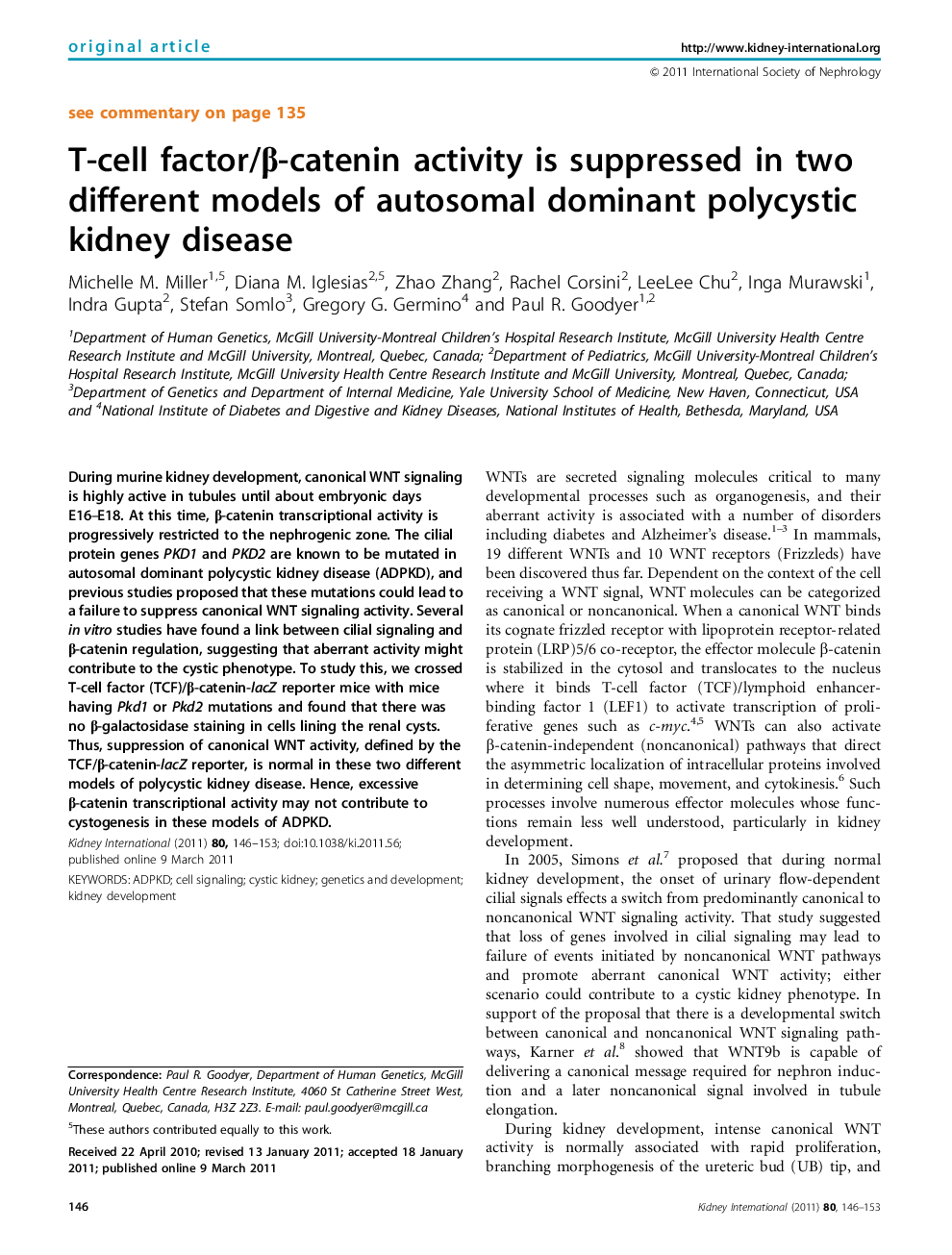| Article ID | Journal | Published Year | Pages | File Type |
|---|---|---|---|---|
| 6162456 | Kidney International | 2011 | 8 Pages |
During murine kidney development, canonical WNT signaling is highly active in tubules until about embryonic days E16-E18. At this time, β-catenin transcriptional activity is progressively restricted to the nephrogenic zone. The cilial protein genes PKD1 and PKD2 are known to be mutated in autosomal dominant polycystic kidney disease (ADPKD), and previous studies proposed that these mutations could lead to a failure to suppress canonical WNT signaling activity. Several in vitro studies have found a link between cilial signaling and β-catenin regulation, suggesting that aberrant activity might contribute to the cystic phenotype. To study this, we crossed T-cell factor (TCF)/β-catenin-lacZ reporter mice with mice having Pkd1 or Pkd2 mutations and found that there was no β-galactosidase staining in cells lining the renal cysts. Thus, suppression of canonical WNT activity, defined by the TCF/β-catenin-lacZ reporter, is normal in these two different models of polycystic kidney disease. Hence, excessive β-catenin transcriptional activity may not contribute to cystogenesis in these models of ADPKD.
